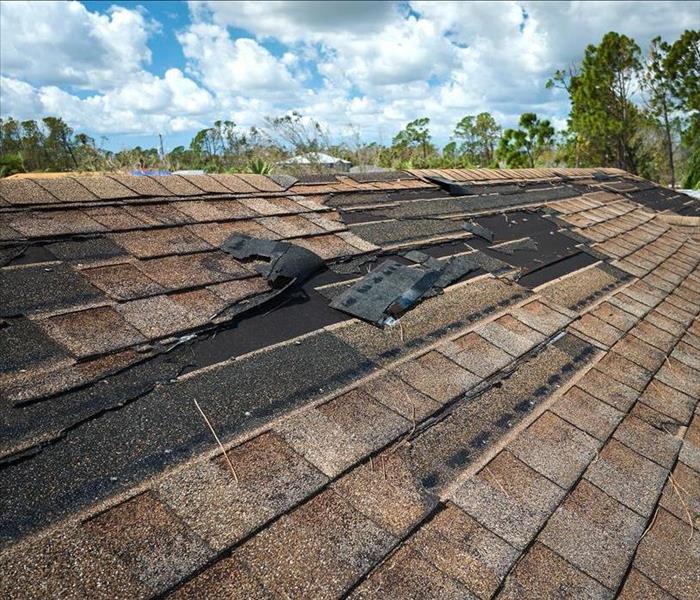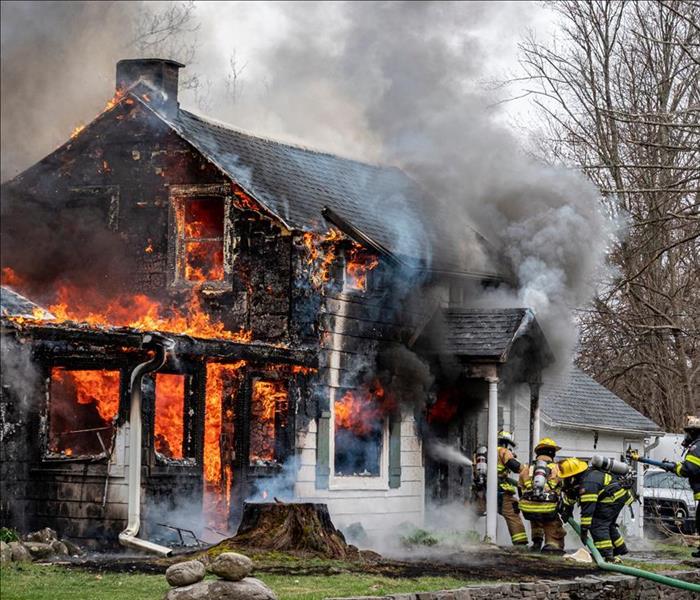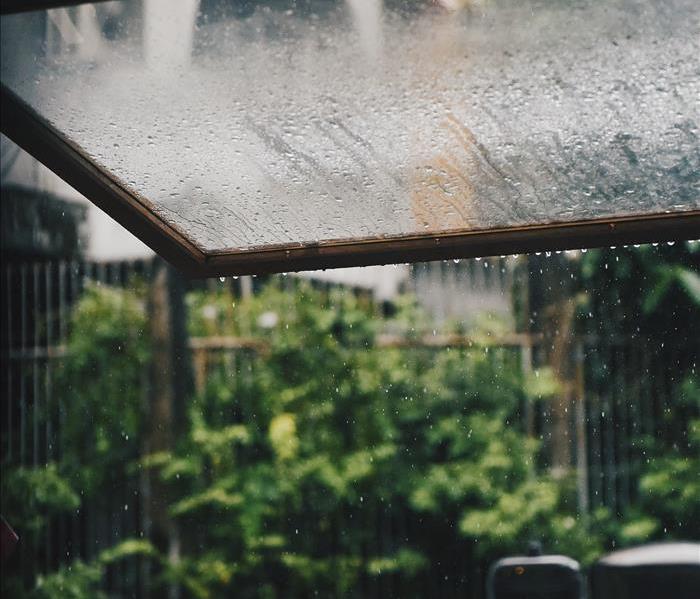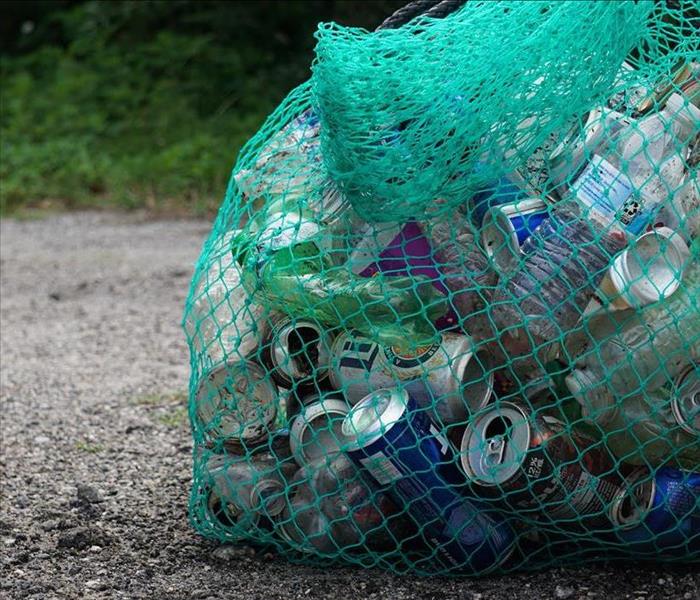Recent Posts
Tips for a Faster Recovery After a Flood at Work | SERVPRO of Issaquah East & North Bend
9/22/2024 (Permalink)
 Don’t let a flood disrupt your business. Contact SERVPRO of Issaquah East & North Bend for prompt flood restoration help!
Don’t let a flood disrupt your business. Contact SERVPRO of Issaquah East & North Bend for prompt flood restoration help!
We all have reliable routines that help us get through our days, especially as business owners. Usually you get to work, turn on lights and start unlocking doors to get your days started. You never in a million years expect to walk right into a disaster situation like a flood!
Unfortunately, floods can happen at any point, and they can quickly become problematic if you are not there immediately to tend to the situation. As the water continues to pour onto your floor, it can become a serious problem really fast.
Knowing what to do when you discover a flood anywhere in your business can help you react faster and recover with minimal or zero long-term consequences.
Your First Reaction
Whenever you discover that your business is underwater, taking quick action is essential to avoid as much structural damage as possible for the rest of your building. Stay calm and focus on keeping staff and customers out of the area while you assess the damage from a dry location.
If the water is still gushing out of a pipe or somewhere else, locate the water valve right away and shut it to stop the flow of water. If you aren’t sure what is causing the rushing water, have someone run to turn off the main water valve for your entire building to be safe.
Once the space is secure, take as many photos of the damage as possible while staying out of the water. Floodwater can carry all kinds of toxic materials like storm runoff, chemicals and sewage, and it can be dangerous for you to come into contact with it. Now is also the time to get SERVPRO of Issaquah East & North Bend on the phone.
What Happens When We Show Up
Our team understands that water damage needs to be addressed right away, so the clock starts ticking as soon as we make contact with you! The longer the water sits, the more likely it is that the water will seep and leak into your subfloors and support beams and that can compromise the integrity of your entire building.
We will arrive quickly, and a few things will happen all at once. Our crew will locate the source of the leak and secure the situation to ensure the flowing water is stopped while also starting the water extraction and drying process.
Our air movers and blowers will dry up your space while our reconstruction team will make sure your building is repaired quickly and thoroughly. We can even handle drying out more fragile possessions like upholstery, drapes and important documents. Our goal is to return your business back to its preloss condition as quickly and as efficiently as possible.
Don’t let a flood take control of your business. Call SERVPRO of Issaquah East & North Bend for immediate flood restoration assistance.
Suffered Storm Damage? Stay Safe With These Tips | SERVPRO of Issaquah East & North Bend
6/22/2024 (Permalink)
 You shouldn't have to suffer through home storm damage alone. That's why SERVPRO of Issaquah East & North Bend wants to help. Call us today!
You shouldn't have to suffer through home storm damage alone. That's why SERVPRO of Issaquah East & North Bend wants to help. Call us today!
Seeing news coverage after a storm and watching the footage of the resulting damage is always an unnerving experience. Just because it didn’t happen to you this time doesn’t mean you are immune to suffering from serious damage someday.
Strong storms can pop up at any time and can damage your home in an instant. If you do become the victim of water, wind or tornado damage, knowing what to do first can help you stay in control and recover faster.
Once the Storm Has Passed
You have done all you could to prepare and are now hunkered down in your safe shelter location. The sounds of the storm are finally fading away, and it no longer feels like the storm is right on top of your house.
Before you get up and head further into your home, check the radar and the weather authorities to make sure there are no other waves coming your way. Once the coast is clear, make your way out slowly and bring your cell phone and weather radio with you just in case.
Move slowly as you look around your property. Broken glass, bent nails and loose floorboards may not be obvious immediately, so use caution and avoid any hazards as you encounter them. Take photos as you go so you have fresh images of any damage that will need to be reported to the insurance company.
After you have done your assessment, it is now a good time to check in with your neighbors. Storms can have a very specific travel pattern and while your home may not have been damaged too extensively, your neighbors may not have fared so well.
What Happens Next
Once your family and neighbors are determined to be safe and no emergency services are needed, it’s time to make some decisions. Call SERVPRO of Issaquah East & North Bend for immediate recovery assistance.
Our team is locally owned and operated, which means we experienced the same weather and started immediately gathering our equipment and supplies in anticipation of our community needing our help.
We will be on our way to you as soon as we make contact, but you can still do a few things to help prevent more damage from occurring while you wait. Close off areas that are dangerous to be in, and lay tarps over exposed areas if it is still drizzling or if you see rain cloud off in the distance. You can even start to pull your possessions and undamaged belongings into another room for safekeeping.
Our team will get right to work securing the rest of your home and cleaning up the damage. We can repair roofs, walls and floors with confidence and we will make sure your home makes a full recovery. We will put your home back together faster so you are displaced as little as possible.
Storm damage can happen at any point in the year. Contact SERVPRO of Issaquah East & North Bend for a quicker restoration.
Going on the Hunt for Water Leaks | SERVPRO of Issaquah East & North Bend
3/22/2024 (Permalink)
 Has your home been impacted by a water leak? Call SERVPRO of Issaquah East today, we are Here to Help®.
Has your home been impacted by a water leak? Call SERVPRO of Issaquah East today, we are Here to Help®.
It’s just a typical day in your home as you run around getting things done and getting kids onto the bus. You run past your bathroom and smell a musty odor or step into your kitchen only for your socks to become soaked through. Is it a simple spill or something more sinister?
Water leaks are always troublesome because they can be hard to track down quickly. The longer it takes to discover the problem, the worse it can become and leave you with some serious structural issues or mold infestations. Water leaks can happen virtually anywhere, but check these locations first to give yourself a good starting point.
The Investigation Process
One of the first places to check is anywhere that is connected to the outside elements. Rain, snow, sleet and ice can all infiltrate your home through the smallest cracks or gaps. Check around your windows and doors as well as lesser-known areas like wiring holes or skylights.
Another common place where leaks happen is around your pipes in your home. As water flows in and out of your home, a single leak or loose connection can slowly introduce water onto your floors or behind your walls.
Over time, this simple leak can cause massive structural problems. Even water leaks around your outdoor spigots can be troublesome if the water drips too close to your foundation and makes its way into your basement.
Your Appliances
If you had to pick, which water-reliant appliance do you use the most in your home? We all love our dishwashers and washing machines, but they can also betray us when we least expect it. If you start to notice a funky odor near your machine or see a drip coming from the bottom of it, it is time to pull it away from the wall and investigate further.
Signs of moisture or a leak include water spots on the wall or floor, visible puddles and mold growth anywhere near the appliance. If you do discover these signs, call us right away so we can get started on your recovery.
How We Can Help
A professional restoration is important for any kind of home disaster, but especially for water leaks. If you don’t get all of the water dried up, it will continue to cause you problems and your home will suffer as a result. Our team will ensure that the standing water is removed promptly, but we will also tackle the hidden moisture behind your walls and floors.
Once the water is gone, we will evaluate the scene and determine if your home is in need of any repairs. Water has the ability to warp or swell floors, ruin drywall, and soak through carpets and subfloors. Oftentimes, a complete removal and replacement of these structural components of your home is necessary, and we can handle the entire process for you.
A simple water leak can lead to a big problem. Contact SERVPRO of Issaquah East & North Bend today.
What Happens After a Fire | SERVPRO of Issaquah East & North Bend
12/22/2023 (Permalink)
 The aftermath of a home fire is overwhelming, but we are here to restore your home with ease. Call SERVPRO of Issaquah East & North Bend now!
The aftermath of a home fire is overwhelming, but we are here to restore your home with ease. Call SERVPRO of Issaquah East & North Bend now!
Even just the thought of suffering a house fire can keep homeowners up at night. House fires continue to be one of the scariest possibilities when it comes to owning a home and the risks associated with it! Thousands of house fires happen across the country every year, so it is important to be prepared for the fact that one may happen to you someday.
While we truly hope it doesn’t, you should know who to call to help you put your home back together again. After the flames are out and the fire department has left, get on the phone and call SERVPRO of Issaquah East & North Bend.
Our First Conversation
Our team is proudly available 24/7, so we will pick up the phone no matter if you call us at 8 p.m. or 3 a.m. We know that disasters don’t just happen when it is convenient, so we are always here just in case.
Our team will quickly start to put together a restoration plan by identifying the emergency contact and by asking many questions about the fire. We will ask how it started, where it spread to and the extent of the damage you see. These questions help ensure we have the right team and equipment packed up before we head to your house.
Once we arrive, we will do a visual assessment of your home to make sure our plans align with the reality of the situation, and we also make sure your home is safe to be in while we work. At this point, we will work on boarding up windows or laying tarps over exposed sections of your home to protect it from further damage due to the elements or weather.
We will also start extracting any standing water! Did you know that most house fires also have water damage or standing water to deal with? That’s because of the firefighting efforts used to put out the flames.
Removing Debris
Now that the water is gone, we can start moving out damaged debris. Depending on the extent of the damage, we will also go through each level and room of your home to remove soot and smoke odors. Smoke can travel to areas of your house that the flames never touched, so we make sure to be thorough in our search.
We will also prioritize your possessions and work hard to save as much of them from permanent damage as possible. We operate on a “restore rather than replace” mentality, so we work hard to clean, sanitize and remove smoke from everything that we can.
The Rebuilding Process
Now that your home is clean and ready to be rebuilt, our team will get to work on the reconstruction needs. Some homes only need minor repairs while others will require partial demolition before they can be rebuilt safely.
We can handle it all! Our team is also a full-service construction and remodeling company, so we can take your home from ruin to remodeled quickly and thoroughly.
Your home is always in good hands with SERVPRO of Issaquah East & North Bend. Contact us if you ever suffer a house fire so we can be there for you.
House fires can be scary and overwhelming. Let SERVPRO of Issaquah East & North Bend help you recover.
Cooking Safely on Thanksgiving: 3 Tips to Prevent Fires
11/6/2023 (Permalink)
 Thanksgiving is a time for family, friends, and delicious feasts.
Thanksgiving is a time for family, friends, and delicious feasts.
Thanksgiving is a time for family, friends, and delicious feasts. However, it's also a day when cooking fires are all too common. The hustle and bustle in the kitchen, combined with multiple dishes being prepared simultaneously, can increase the risk of accidents. To ensure your holiday remains joyful and fire-free, here are three essential tips to help reduce the risk of cooking fires on Thanksgiving.
Stay Vigilant and Avoid Distractions: Cooking multiple dishes at once, while entertaining guests and managing other holiday preparations, can be overwhelming. It's easy to get distracted, but this is one of the primary causes of kitchen fires. To prevent such accidents, keep the following in mind:
Set a timer for each dish: Timers can help you keep track of different cooking times and prevent overcooking or burning. It's a simple but effective way to stay organized and avoid distractions.
Assign a "kitchen manager": Designate someone to be responsible for the kitchen and cooking activities. This person can ensure that nothing is left unattended, and they can call for help if needed.
Keep flammable items away: Make sure to keep dish towels, oven mitts, and other flammable materials away from stovetops and hot surfaces. These materials can quickly catch fire if they come into contact with open flames or hot cookware.
Maintain a Clean and Clutter-Free Cooking Environment: A cluttered kitchen can become a breeding ground for accidents. It's essential to maintain a clean and organized cooking environment to minimize the risk of fires. Here's what you can do:
Clear the area around the stove: Make sure there are no paper towels, dishcloths, or other flammable objects near the stove. It's all too easy for these items to catch fire if they accidentally come into contact with hot burners.
Clean your oven and stovetop: Grease and food particles can accumulate over time, increasing the risk of flare-ups. Regularly clean your oven, stovetop, and exhaust fan to prevent this buildup.
Use proper cookware: Ensure that you're using cookware with flat, stable bottoms that won't easily tip over. Also, never leave pots and pans unattended on the stovetop, especially when cooking with oil.
Be Prepared for Emergencies: Even with the best precautions, accidents can still happen. Being prepared for emergencies can make all the difference in preventing small incidents from turning into major disasters:
Keep a fire extinguisher in the kitchen: Make sure you have a working fire extinguisher within easy reach in your kitchen. Know how to use it and instruct your family members or guests as well.
Create a fire escape plan: Discuss and establish a fire escape plan with your family, including the nearest exits and a meeting point outside. This plan is crucial in case a fire breaks out and evacuation becomes necessary.
Call 911 immediately: In the event of a fire that you can't control, call 911 without delay. Do not attempt to extinguish a large or spreading fire on your own.
Thanksgiving should be a day of gratitude and celebration, not one marred by cooking fires. By staying vigilant, maintaining a clean cooking environment, and being prepared for emergencies, you can reduce the risk of accidents and enjoy a safe and happy holiday with your loved ones. Remember, a little extra caution in the kitchen can go a long way in ensuring a memorable and incident-free Thanksgiving.
5 Essential Steps to Prevent Water Damage in Your Home This Fall
10/25/2023 (Permalink)
 Heavy rains, falling leaves, and the gradual transition to winter can all contribute to water-related issues.
Heavy rains, falling leaves, and the gradual transition to winter can all contribute to water-related issues.
As the leaves change colors and the air turns crisper, the arrival of fall brings a unique set of challenges for homeowners. One of the most significant threats during this season is water damage. Heavy rains, falling leaves, and the gradual transition to winter can all contribute to water-related issues. To help you safeguard your home, we've compiled a list of five essential steps you can take to prevent water damage this fall.
Clean and Maintain Gutters and Downspouts
Your home's gutters and downspouts are your first line of defense against water damage. They channel rainwater away from your roof and foundation, preventing potential leaks and flooding. In the fall, it's crucial to clean your gutters regularly. Falling leaves and debris can clog gutters, leading to overflow and water damage. Here's what you can do:
- Remove leaves, twigs, and debris from the gutters.
- Ensure downspouts are clear and extend at least 5-6 feet away from your home's foundation.
- Inspect gutters for damage or leaks and make necessary repairs.
- Inspect and Maintain Your Roof
- Your roof is another vital component in keeping water out of your home.
- Check your roof for missing or damaged shingles, cracks, and leaks.
The fall is an ideal time to inspect your roof since it's essential to address any issues before winter's harsh conditions arrive. If you're not comfortable doing this yourself, consider hiring a professional roofer to inspect and repair any problems.
Seal Gaps and Cracks
Water can find its way into your home through even the smallest gaps and cracks. Inspect the exterior of your house for any openings, including around windows, doors, and the foundation. Use caulk or weatherstripping to seal gaps and prevent water intrusion. Pay close attention to areas where you've had problems in the past or areas that are prone to drafts.
Landscape Maintenance
Landscaping can have a significant impact on preventing water damage. In the fall, it's essential to manage leaves, which can accumulate in your yard and clog drains. Here's what you can do:
- Regularly rake or mulch leaves to prevent them from blocking drainage systems.
- Trim trees and branches away from your roof to reduce the risk of fallen debris during storms.
- Ensure your yard is properly graded to direct water away from your home's foundation.
- Inspect Your Sump Pump and Basement
- Fall is a good time to check your sump pump and basement for potential water issues. Test your sump pump by pouring water into the pit and making sure it activates properly. Ensure it discharges water away from your foundation. Additionally, inspect your basement for any signs of water damage, such as dampness, mold, or mildew.
- Address any problems promptly to prevent more extensive damage.
Preventing water damage in your home during the fall is a proactive and essential task for homeowners. By following these five steps—maintaining your gutters and downspouts, inspecting and maintaining your roof, sealing gaps and cracks, managing your landscaping, and inspecting your sump pump and basement—you can significantly reduce the risk of water-related issues. Remember, an ounce of prevention is worth a pound of cure, especially when it comes to safeguarding your home and belongings from water damage. Take these steps, and you'll enjoy a dry and worry-free fall season.
Protecting Your Home in Issaquah and North Bend: 3 Ways Fall Weather Can Cause Water Damage and How SERVPRO® Can Help
9/20/2023 (Permalink)
 While fall in Issaquah is a breathtaking sight to behold, it also brings its fair share of challenges, including the potential for water damage.
While fall in Issaquah is a breathtaking sight to behold, it also brings its fair share of challenges, including the potential for water damage.
As the vibrant colors of autumn paint the landscapes of Issaquah and North Bend, it's essential to remember that fall weather can bring its own set of challenges, including the potential for water damage to your home. With heavy rains, fallen leaves, and fluctuating temperatures, homeowners need to be vigilant to prevent water infiltration. Fortunately, SERVPRO® is here to help with top-notch water damage mitigation services. In this blog, we'll explore three ways fall weather can cause water damage inside and outside homes and how our team can assist you in safeguarding your property.
Heavy Rainfall and Flooding
Fall is notorious for its unpredictable weather patterns, and the Pacific Northwest is no exception. The combination of heavy rainfall and leaves clogging gutters and downspouts can lead to a perfect storm of water damage. When gutters are blocked, rainwater has nowhere to go but overflow, potentially seeping into your home's foundation or causing roof leaks.
How SERVPRO Can Help:
- Our team offers professional gutter cleaning services to ensure water flows freely away from your home, preventing costly water damage.
- In the event of flooding, we provide emergency water extraction and drying services to prevent mold growth and structural damage.
Fallen Leaves and Debris
The picturesque fall foliage may be stunning, but those fallen leaves can wreak havoc on your home. Leaves can accumulate in roof valleys, block drainage systems, and create a breeding ground for mold and rot. Moreover, wet leaves can become slippery, posing a safety hazard for homeowners.
How SERVPRO Can Help:
- Our technicians can perform thorough roof and gutter inspections to remove leaves and debris, preventing potential water damage and ensuring the safety of your property.
Temperature Fluctuations and Frozen Pipes
As fall transitions into winter, temperature fluctuations are common in the Issaquah and North Bend areas. When temperatures drop significantly, water in pipes can freeze and expand, leading to burst pipes and water damage inside your home.
How SERVPRO Can Help:
- We offer comprehensive water damage restoration services, including water extraction, drying, and mold remediation, to address the aftermath of burst pipes and prevent further damage.
- Our team can also provide tips on winterizing your home to minimize the risk of frozen pipes.
While fall in Issaquah and North Bend is a breathtaking sight to behold, it also brings its fair share of challenges, including the potential for water damage to your home. The good news is that SERVPRO of Issaquah and North Bend is here to assist you every step of the way. From preventative maintenance like gutter cleaning to emergency water damage mitigation and restoration, we have the expertise and resources to protect your home.
Don't let fall weather catch you off guard; be proactive in safeguarding your property. Contact us today to learn more about our water damage mitigation services and how we can help you keep your home safe and dry during the fall season and beyond.
Water Damage In Basements
8/23/2023 (Permalink)
 Basements can be prone to water damage.
Basements can be prone to water damage.
Basements are often an underrated and overlooked space in homes, yet they serve as valuable extensions of our living areas. However, beneath the surface, a hidden menace often lurks – water damage. Homes with basements are particularly susceptible to this issue due to their unique structural characteristics and the very nature of subterranean environments. Here are some reasons why basements are prone to hidden water damage and the steps homeowners can take to protect their property.
1. Subsurface Water Seepage
Basements are located underground, surrounded by soil that can hold varying levels of moisture. Over time, groundwater can seep through foundation walls and floors, leading to a phenomenon known as subsurface water seepage. This slow but continuous water infiltration can cause structural damage, weaken the foundation, and create an environment conducive to mold growth.
2. Hydrostatic Pressure
As the soil around a basement becomes saturated with water, hydrostatic pressure builds against the foundation walls. This pressure can force water into the basement through cracks, joints, and other vulnerable points. The relentless force of hydrostatic pressure makes it challenging to keep basements entirely water-free.
3. Poor Drainage Systems
Basements depend on effective drainage systems to channel water away from the foundation. However, inadequate or poorly maintained drainage systems can lead to the accumulation of water around the basement walls. This can result in water seeping into the basement, especially during heavy rainfall or snowmelt.
4. Cracks and Weak Points
Over time, the foundation of a home can develop cracks, gaps, and weak points. These vulnerabilities provide easy entry points for water to infiltrate the basement. Even minor cracks can eventually widen due to the pressure of expanding ice during colder months or shifting soil.
5. Condensation and Humidity
Basements are often cooler than the rest of the house, which can lead to temperature differentials and condensation. Moisture in the air can condense on cooler surfaces, contributing to elevated humidity levels in the basement. This excess humidity can lead to mold growth, rot, and deterioration of materials.
Preventing and Mitigating Basement Water Damage
While basements are inherently more susceptible to water damage, homeowners can take proactive measures to prevent and mitigate the risks:
Foundation Maintenance: Regularly inspect your basement for cracks, gaps, and other vulnerabilities. Address any issues promptly to prevent water infiltration.
Proper Grading: Ensure that the land around your home slopes away from the foundation, directing water away from the basement.
Sump Pump Maintenance: If your basement has a sump pump, ensure it's well-maintained and operational. A sump pump helps remove excess water from the basement.
Effective Drainage: Install and maintain proper drainage systems, including downspouts, gutters, and French drains, to channel water away from the foundation.
Waterproofing: Consider applying waterproof coatings to basement walls and floors to create a barrier against moisture.
Humidity Control: Use dehumidifiers to regulate humidity levels in the basement and prevent condensation.
Homes with basements offer valuable space but also come with unique challenges, particularly when it comes to hidden water damage. By understanding the factors that contribute to basement water issues and taking proactive steps to prevent and address them, homeowners can safeguard their property and ensure a dry and healthy living environment for years to come.
Candle Safety and Alternatives
8/18/2023 (Permalink)
 Candles have many flameless alternatives.
Candles have many flameless alternatives.
Candles have a timeless allure, casting a warm and enchanting glow that transforms any space into a cozy haven. Their presence can bring a sense of tranquility and nostalgia, but beneath the soothing ambiance lies a potential danger that should never be overlooked. The mesmerizing dance of a candle's flame can turn into a dangerous inferno if left unattended for too long.
The Hidden Threat of Spontaneous Combustion:
You might think that a candle's worst enemy is the gust of a strong breeze, but the real danger lies in something much more sinister: spontaneous combustion. This phenomenon occurs when a candle is left burning for an extended period, typically beyond four hours. As the candle consumes its wax, it generates heat that can build up within its surroundings. If the ambient temperature is warm enough, the heat can ignite flammable objects nearby, leading to a fire that could rapidly engulf a room or even an entire home.
Why Candle Safety Matters:
Candle safety isn't just a trivial matter; it's a crucial aspect of ensuring the well-being of your home and loved ones. Here are some important reasons why practicing caution with candles is essential:
Preventing Fires: The most obvious reason is to prevent fires from occurring. The consequences of a candle-related fire can be devastating, leading to property damage, injuries, or even loss of life.
Smoke and Soot: Prolonged candle burning can produce excessive smoke and soot, which can tarnish your walls, furniture, and the air quality in your home.
Pet Safety: If you have pets at home, an unattended candle can pose a significant risk to their safety. Curious pets might accidentally knock over a candle or get too close to the flame, resulting in burns or other injuries.
Environmental Impact: Traditional candles often contain paraffin, a petroleum-based wax that releases harmful chemicals when burned. This can contribute to indoor air pollution and negatively impact the environment.
Candle Safety Tips:
If you're a candle enthusiast, there's no need to forsake your love for these beautiful sources of light. By following these safety tips, you can enjoy the cozy ambiance while minimizing risks:
Never Leave Unattended: Always extinguish candles before leaving a room or going to sleep. Even a short absence can lead to unexpected incidents.
Trim the Wick: Keep the wick trimmed to around 1/4 inch to prevent excessive flickering, smoke, and soot.
Use Proper Holders: Place candles in sturdy, non-flammable holders on a flat, heat-resistant surface.
Keep Away from Flammables: Keep candles away from curtains, paper, or any other flammable materials.
Ventilation: Ensure proper ventilation in the room to prevent a buildup of heat and smoke.
Time Limit: Limit candle burning to a maximum of 2-3 hours at a time, allowing the wax to cool down before relighting.
Flameless Alternatives:
For those who prioritize safety but still want to create a soothing atmosphere, flameless candle alternatives offer a wonderful solution:
LED Candles: These candles mimic the flickering effect of real candles without the actual flame. They are safe, reusable, and available in various sizes and designs.
Oil Diffusers: Essential oil diffusers not only emit pleasant scents but also provide soft lighting. Some models come with LED lights that can mimic candlelight.
String Lights: Delicate string lights can add a magical touch to any room, creating a warm and inviting atmosphere.
The allure of candles is undeniable, but their potential danger should never be underestimated. By adhering to candle safety guidelines and considering flameless alternatives, you can create a cozy ambiance without compromising the safety of your home and loved ones. So, whether you're relaxing alone or hosting a gathering, remember that a little caution goes a long way in ensuring both comfort and safety.
The Burning Consequence: How Littering Increases the Risk of Fires Around Homes and Businesses
7/7/2023 (Permalink)
 Littering harms our environment, our community, and the nature around us.
Littering harms our environment, our community, and the nature around us.
Picture a serene neighborhood with beautifully landscaped gardens and bustling commercial areas that are home to thriving businesses. Now, imagine this idyllic scene marred by the devastating consequences of a fire. One of the lesser-known factors that contribute to the escalation of such fires is littering. Let's examine the often overlooked link between littering and the increased risk of fires surrounding homes and businesses.
Ignition Sources
Discarded litter serves as potential ignition sources, especially in dry and flammable environments. Cigarette butts, matchsticks, and other smoldering materials can easily ignite and spark a fire when they come into contact with dry grass, leaves, or other combustible materials. As litter accumulates around residential areas and commercial spaces, the probability of accidental ignition rises, putting properties and lives at risk.
Chemical Reactions
Certain types of litter, such as hazardous waste or chemical containers, pose an even greater threat. When improperly disposed of, these materials can react with each other or with the environment, leading to fires and explosions. Chemical reactions can occur due to the mixture of incompatible substances, exposure to heat or sunlight, or the accumulation of reactive materials in close proximity. Negligent littering not only endangers lives but can also have severe ecological consequences.
Blocked Drainage Systems
Litter, particularly plastic waste, can accumulate in storm drains, gutters, and other drainage systems. When these pathways become blocked, they hinder the smooth flow of water during rainstorms or firefighting efforts. This obstructed drainage can cause water to accumulate in undesired areas, increasing the risk of flooding and hindering fire suppression efforts when they are needed the most.
Fuel for Fires
The presence of litter, especially in urban or suburban areas, provides ample fuel for fires to spread rapidly. Dry vegetation, fallen leaves, and trash can act as kindling, enabling flames to engulf larger areas. Once a fire starts, it can easily jump from one piece of litter to another, rapidly intensifying and endangering nearby homes and businesses. The accumulation of litter also creates an additional challenge for firefighters, as it obstructs their access to affected areas.
Wind-Driven Fires
Wind can play a significant role in spreading fires, and littered areas are more susceptible to wind-driven blazes. Lightweight litter, such as paper, plastic bags, or discarded packaging, can be easily carried by gusts of wind, depositing them in nearby open spaces, trees, or buildings. These scattered fragments become potential fuel sources, increasing the likelihood of secondary fires and making fire containment more challenging.
Littering may seem like a minor offense, but its impact on fire risk cannot be ignored. From ignition sources to blocked drainage systems and the provision of abundant fuel for flames, discarded trash can quickly transform into a devastating fire hazard. Raising awareness about the correlation between littering and fire risks is crucial for fostering responsible waste management practices. By promoting proper disposal, recycling, and community involvement, we can work together to reduce the risk of fires around our homes and businesses, ensuring a safer and more resilient environment for everyone.
 Don’t let a flood disrupt your business. Contact SERVPRO of Issaquah East & North Bend for prompt flood restoration help!
Don’t let a flood disrupt your business. Contact SERVPRO of Issaquah East & North Bend for prompt flood restoration help!

 24/7 Emergency Service
24/7 Emergency Service








